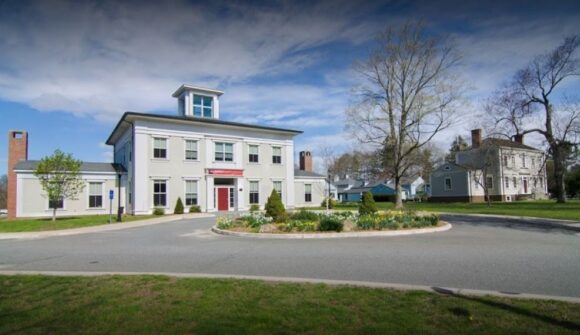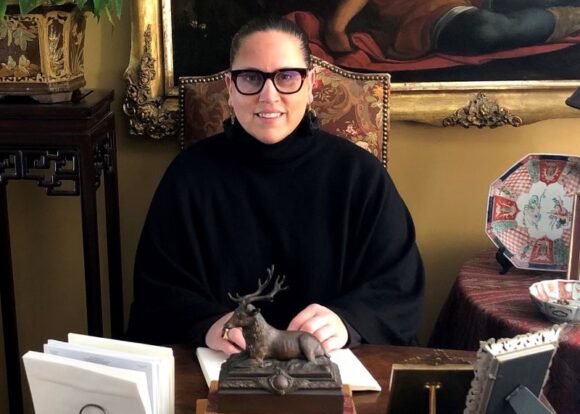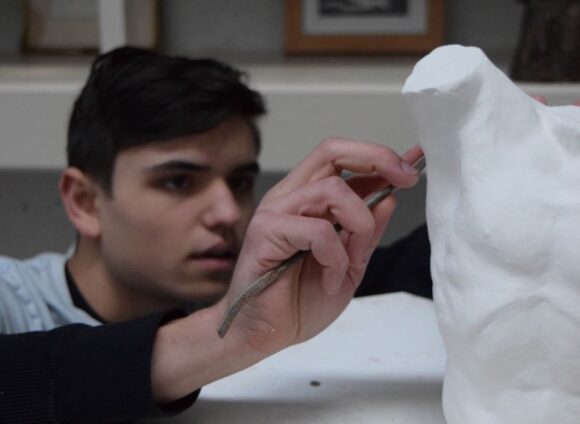
OLD LYME — The Lyme Academy of Fine Arts, pictured above, has launched its application drive for full-time students with a reimagined core program of study, which will commence in late September. Led by the husband and wife team of Jordan Sokol and Amaya Gurpide, a dynamic new faculty of internationally-acclaimed instructors will teach students the foundational skills on which they can build a career in the fine arts.
“We’re looking for students who really want to apply themselves and work hard to grow and develop” said Sokol, himself an accomplished painter, adding, “You’ve got to be willing to put in the thousands of hours required, if you are serious about developing your talent. There are no short-cuts.”

It is expected that most students will study for three years, although some will pursue a shorter course of study and others longer, depending on their individual objectives and the progress they make developing their skills.
Building on the momentum developed from a series of community programs that have energized the campus, the Academy’s Executive Director Mora Rowe, said, “We have stunning facilities in a magical setting that combines a great history with the future of figurative and representational arts.”
Due to the reorganization that has taken place at the Academy, it will no longer confer Bachelor’s degrees. In place of seat-time requirements for credit accumulation, students will instead focus on skill-building with an eye towards mastery.

“As a result of this shift, we’ve been able to significantly reduce the Academy’s overhead costs and can offer a full-time course of study for under $10,000,” said Rowe. At a time when many are questioning the spiraling costs of higher education, students can now attend Lyme Academy and complete a course of study for less than the amount for a single year’s tuition when the institution conferred Bachelor of Fine Arts degrees.
Founded in 1976 by the sculptor Elisabeth Gordon Chandler, the Academy was created as an institution dedicated to the traditional, skills-based education, first taught in the Renaissance academies of Europe and later at Paris’s École des Beaux-Arts.
In walking away from being a degree-granting institution, Lyme Academy has returned to its roots: at its founding and for many years thereafter, students were attracted to the Academy to learn skills, not to obtain a degree.

Chandler’s legacy continues in its new curriculum, which combines rigorous studio instruction in drawing and painting with anatomy, sculpture, and the histories of art. Integrated into this instructional framework is the progressive spirit of today’s Academy and a commitment to preparing its students for the 21st century art world.
The Academy’s Core Program is comprehensive and intense: classes are conducted five days a week, from 9 a.m. until 9 p.m., with weekly supplementary instruction in anatomy, sculpture, and the histories of art. Landscape, still life, and portraiture are included in the program, as are dedicated explorations of the properties of light and form.
Students work in custom north-lit studios, honing their technical skills through the direct observation of imported European plaster casts and live models. Intimate class sizes allow for in-studio demonstrations and individualized critiques, as well as guided museum and gallery visits.
Faculty and guest lectures are regularly scheduled, many of which are open to the public.
The camaraderie that is felt by students at the Academy is mirrored by the community outside the campus grounds. Located midway between Boston and New York, Old Lyme, Conn. has been a site of artistic congregation for over a century, recognized as the birthplace of the famed Lyme Art Colony and the ‘Home of American Impressionism.’
Editor’s Note: Enrollment for the 2021-2022 academic year is now open; applications are accepted on a rolling basis throughout the academic year. For further information about enrollment and how to apply, visit this link.
For further information about the Academy and its vibrant schedule of lectures, exhibitions, workshops, and part-time programs, and how to become an ‘Arts Insider,’ visit this link.